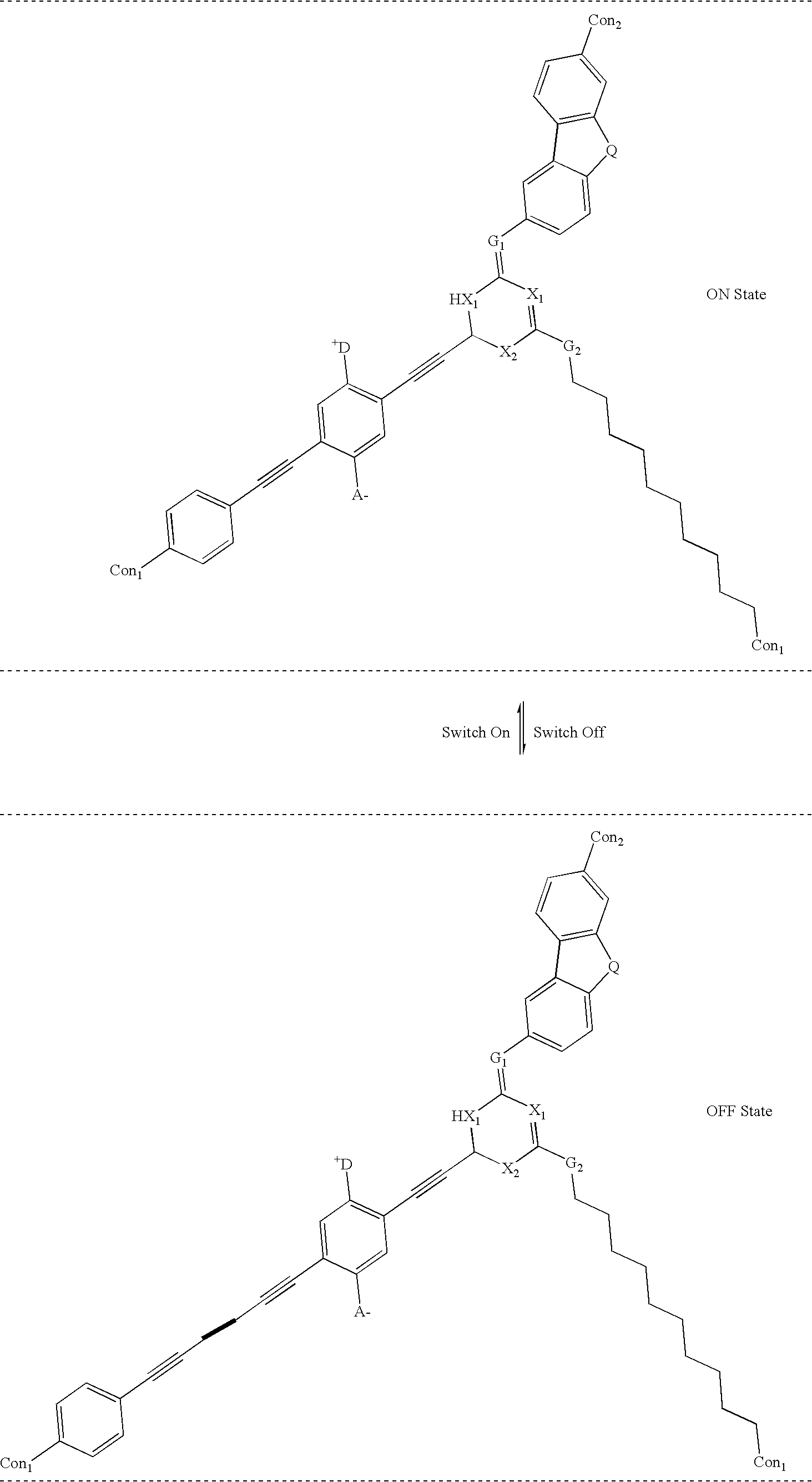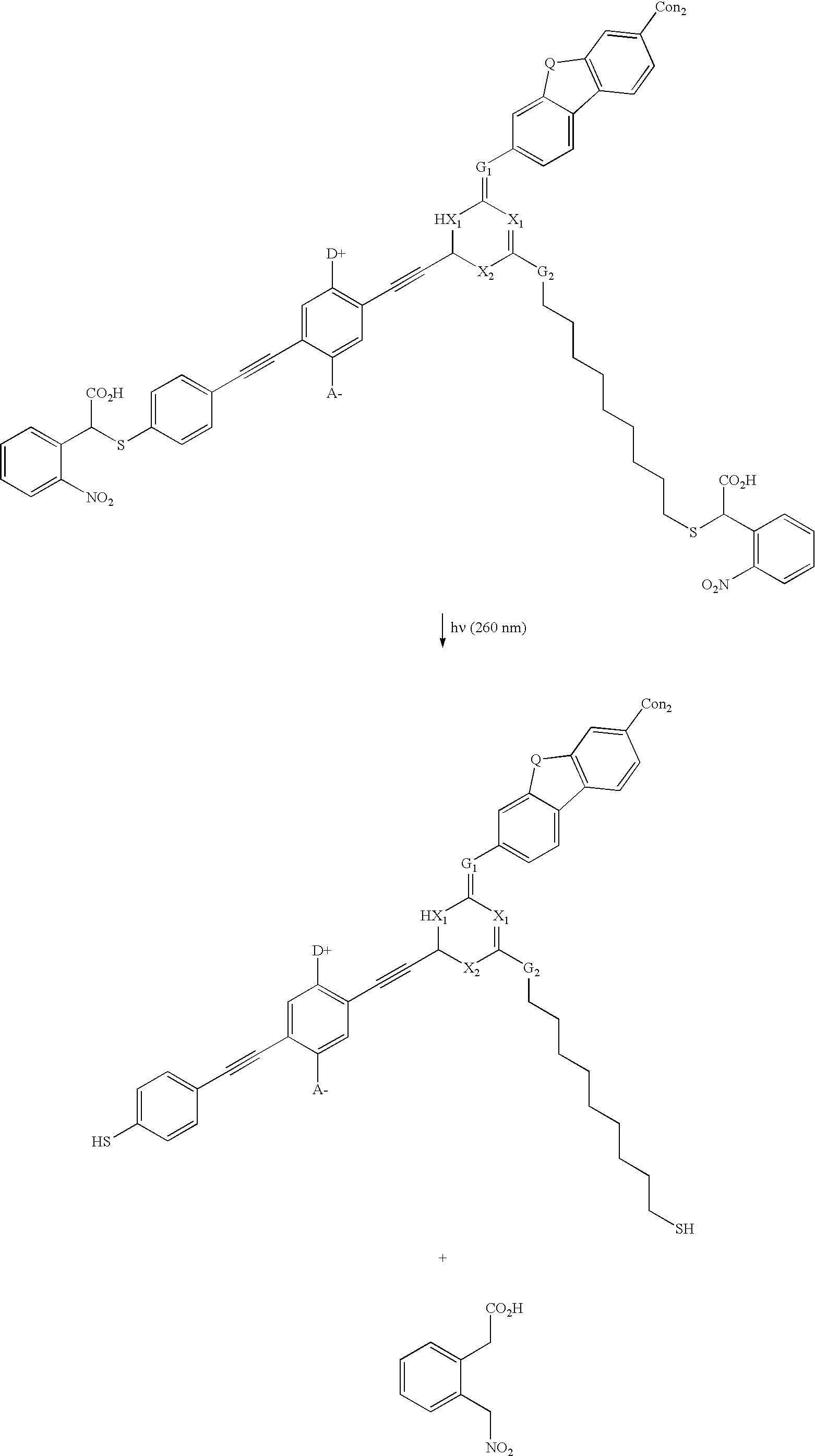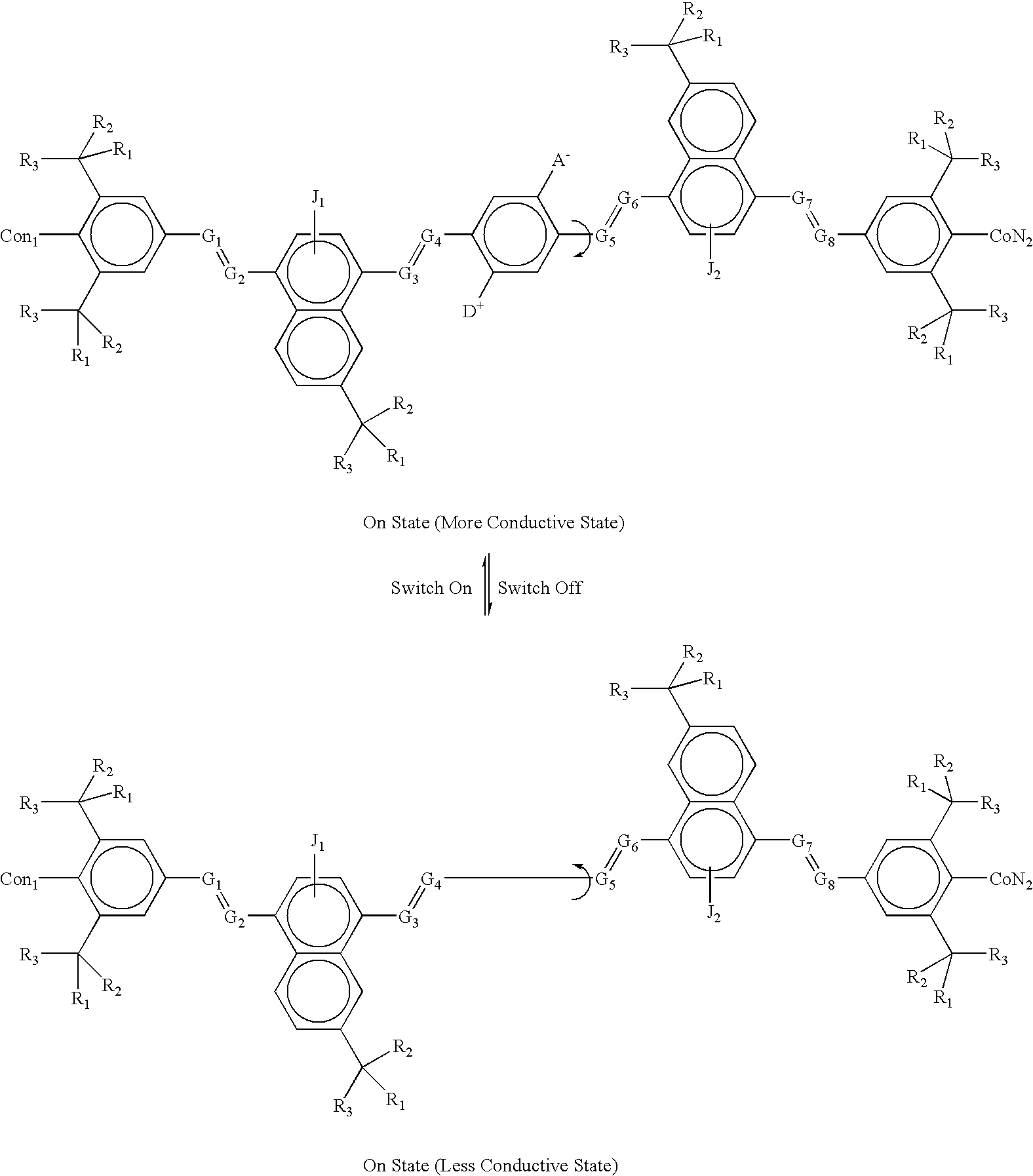Photopatternable molecular circuitry
a molecular circuit and molecular technology, applied in the field of photopatternable molecular circuitry, can solve the problems of adversely altering the properties of the ultra-thin junction, essentially unremovable/inseparable, barrier materials between the molecule and the conventional resist, etc., to reduce or eliminate the conventional photoresist masking layer, simplify the traditional process, and reduce the effect of tim
- Summary
- Abstract
- Description
- Claims
- Application Information
AI Technical Summary
Benefits of technology
Problems solved by technology
Method used
Image
Examples
example 1b
[0087] Example 1b below is a real molecular example of one embodiment of the present invention, which relies on a rotor portion combined with a stator portion. In Example 1b, the rotation axis of the rotor is designed to be in a 30 to 70 degree angle to the net current-carrying axis of the molecules. 1
[0088] where:
[0089] The symbol A.sup.-is an Acceptor group; it is an electron-withdrawing group. It may be one of following: carboxylic acid or its derivatives, sulfuric acid or its derivatives, phosphoric acid or its derivatives, nitro, nitrile, hetero atoms (e.g., N, O, S, P, F, Cl, Br), functional group with at least one of above-mentioned hetero atoms (e.g., OH, SH, NH, etc.), hydrocarbons (either saturated or unsaturated), or substituted hydrocarbons.
[0090] The symbol D.sup.+ represents a Donor group; it is an electron-donating group. It may be one of following: hydrogen, amine, OH, SH, ether, hydrocarbon (either saturated or unsaturated), substituted hydrocarbon, or a functional ...
example 2b
[0130] Example 2b below shows a real example of a PSG-modified switchable molecule, which contains PSGs on both the connecting units and the bridging groups Upon UV irradiation, both connecting groups and bridging groups decompose to form small molecules, which are removable by base and / or solvent washing. 4
[0131] where:
[0132] The symbol A.sup.- is an Acceptor group; it is an electron-withdrawing group. It may be one of following: hydrogen, carboxylic acid or its derivatives, sulfuric acid or its derivatives, phosphoric acid and its derivatives, nitro, nitrile, hetero atoms (e.g., N, O, S, P, F Cl, Br), or a functional group with at least one of above-mentioned hetero atoms (e.g., OH, SH, NH, etc.), hydrocarbon (either saturated or unsaturated), or substituted hydrocarbon.
[0133] The symbol D.sup.+ represents a Donor group; it is an electron-donating group. It may be one of following: hydrogen, amine, OH, SH, ether, hydrocarbon (either saturated or unsaturated), substituted hydrocarb...
example 4b
INDUSTRIAL APPLICABILITY
[0153] The use of a molecular photoresist as described herein is expected to find use in the fabrication of micrometer-scale and nanometer-scale devices.
PUM
| Property | Measurement | Unit |
|---|---|---|
| thickness | aaaaa | aaaaa |
| size | aaaaa | aaaaa |
| thick | aaaaa | aaaaa |
Abstract
Description
Claims
Application Information
 Login to View More
Login to View More - R&D
- Intellectual Property
- Life Sciences
- Materials
- Tech Scout
- Unparalleled Data Quality
- Higher Quality Content
- 60% Fewer Hallucinations
Browse by: Latest US Patents, China's latest patents, Technical Efficacy Thesaurus, Application Domain, Technology Topic, Popular Technical Reports.
© 2025 PatSnap. All rights reserved.Legal|Privacy policy|Modern Slavery Act Transparency Statement|Sitemap|About US| Contact US: help@patsnap.com



